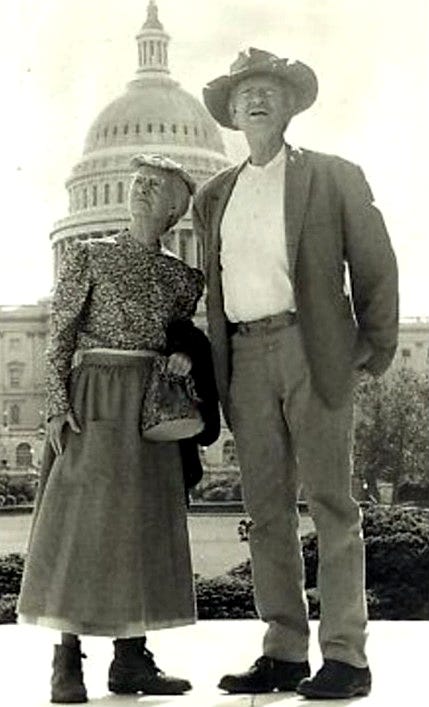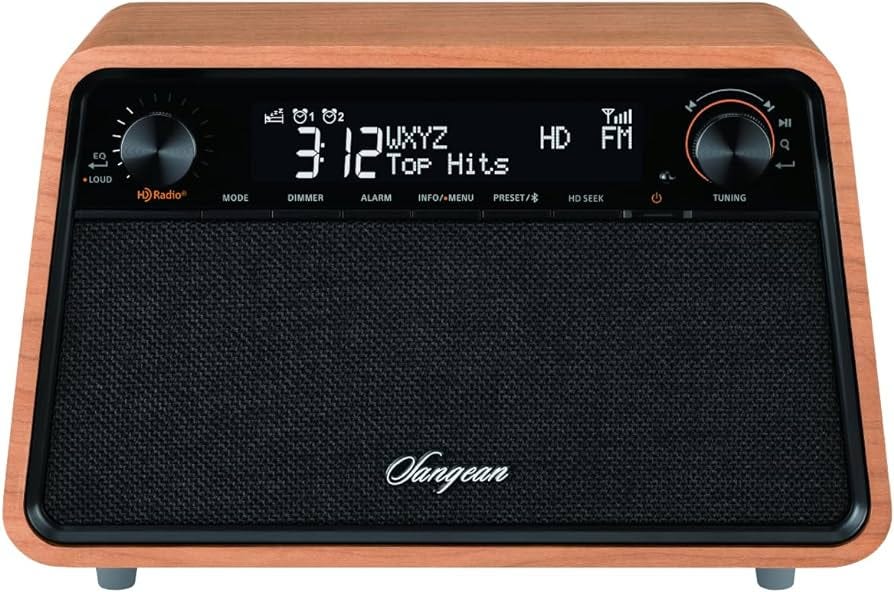Could this Demographic Trend Kill Contemporary Music Radio?
Young people have dominated American popular culture for as long as most of us can remember. But what happens to music when there aren't many young people?
Today’s Graphs About Songs contains just one graph and it has no data about music. However, this graph spotlights a major shift in the United States’ population that could have monumental repercussions for current music.
YOUNG PEOPLE RULED EVERYTHING
When Woodstock became history’s biggest musical expression of youth culture in the summer of 1969, almost half (46%) of America’s population was under age 25. At this point, the baby boom that started after World War II and continued through the 1950s resulted in a boom of teens and young adults.
In contrast, the dearth of births during the Great Depression and WWII resulted in a dip in 25- to 49-year-olds in the U.S. by the late 1960s. Coupled with lower life expectancy, there were still relatively few (24%) Americans 50 years old and older. By 1970, there were 22% more Americans under age 25 than were 50 or older, the greatest bulge of young people in modern American history.
This growth of youth had a massive impact on America’s media.
America’s TV networks systematically cancelled TV shows that catered to older (and more rural) Americans, such as The Beverly Hillbillies, Mayberry R.F.D., and The Lawrence Welk Show, and replaced them with shows that appealed to young (city-dwelling) viewers such as All in the Family, M*A*S*H, and The Mary Tyler Moore Show.
On the radio, you’d find several Top 40 stations on AM and a new Rock station on FM in many cities. In contrast, you’d find no station playing those classic hits for the 50+ audience, whose musical tastes would have been formed during the Jazz Age 1920s. Even adult-oriented “Middle Of The Road” stations were increasingly dropping pre-rock stalwarts for the latest adult-friendly Rock ‘n’ Roll. Frank Sinatra was out. Elton John was in.
Most of us have only known an America where youth culture is revered and where media and advertisers prize young consumers.
But while no one was looking, America has become demographically very different.
GENERATION Z: DOOMED TO BE SMALL
In 2015, for the first time, Americans aged 50 and older surpassed those under age 25. Today, only one-third of Americans are under age 25. By 2030, the gap between the under 25 youth and the 50+ crowd will grow to eight percentage points.
What happened to young people?
The obvious answer is all those Baby Boomers that killed Gunsmoke half a century ago are now eligible for Social Security. With improvements in healthcare and wellness, they’re living a lot longer than their grandparents and will be with us for many years.
The less obvious answer is fewer babies. Back in 1950, there were 24 babies born each year for every 1,000 Americans. Today, there are only 12 births per 1,000. Birth rates tanked during the 1960s and 1970s thanks to the invention and growth of birth control. When the Great Recession hit in 2008, Americans started having even fewer kids—a trend that shows no signs of changing.
Even less obvious is the impact of U.S. immigration policies. While The Pill was rapidly lowering birth rates, relaxed immigration policies in 1966 almost entirely made up the drop in births with young immigrants in coming decades. Gen X has the highest percentage of immigrants of any living U.S. generation.
Today’s kids are the most diverse group of native-born Americans thanks to those Gen X immigrants. However, shifting immigration attitudes and policies mean there aren’t nearly enough new people migrating to the United States to compensate for today’s record low birth rates.
Generation Z appears doomed to be a small generation.
Colleges and universities are already bracing for the impact. The Enrollment Cliff is academia’s name for the looming and precipitous drop in college-aged students which could reshape America’s higher education system. The smaller group of Generation Z college applicants are increasingly focusing on flagship state universities and elite private schools. These trends could force some regional public schools and smaller private schools to close their doors.
SO WHAT DOES IT MEAN FOR MUSIC?
Young people always determine how popular music evolves. With a record-low percentage of the population, however, Generation Z may have a smaller cultural impact than did previous generations at their age. They started having an influence over which songs become popular about five years ago. But while every generation finds new and unique music styles that speak to them, today’s teens may find their cultural impact isn’t as widespread and long lasting as their parents and grandparents.
More directly---and as a lifelong radio nut I loathe typing this sentence---this demographic shift may kill Top 40 radio.
Not only are there relatively fewer young folks today, those under age 25 reportedly spend about half as much time with AM/FM radio than do those 50+ Americans. Let’s do that math. For every one person under 25 listening to the radio at any given moment, there are three AARP-eligible listeners.
I have argued—and I will continue to argue—that radio group owners need to create stations specifically designed for today’s teens and young adults. Frankly, it’s radio’s only hope of making young people interested in curated, hosted music programming (a.k.a. radio). Besides, CHR is long overdue for a sonic makeover.
But if I were a station owner who needed a winning format today, I’d create 60s-based Oldies stations catering to those 76 million Boomers that comprise over 20 percent of all living Americans and who still spend lots of time with radio. Heck, they even still listen to AM. Radio largely abandoned those Boomers two decades ago when they began aging out of the coveted 25- to 49-year-old demo and turned their Oldies stations into JAMZ and Jack FM. Not only are today’s 50+ Americans a much larger part of our population, they’re reinventing what it means to be old as much as they once reinvented youth—and spending money to do it.
But I digress…
Looking at the graph above, I couldn’t blame radio if it concluded there simply aren’t enough young people to chase anymore. Not only could it kill Top 40—a stalwart of the dial since Elvis—it could also see Alternative, Hip Hop, and Country stations increasingly cater to older audiences who care more about their familiar favorites than in keeping up with young people’s new music.
Personally, I hope there’s still room on the radio dial for everyone on today’s graph to have their station.
Sources for today’s post:
United States Census Bureau: “America Is Getting Older”: https://www.census.gov/newsroom/press-releases/2023/population-estimates-characteristics.html






